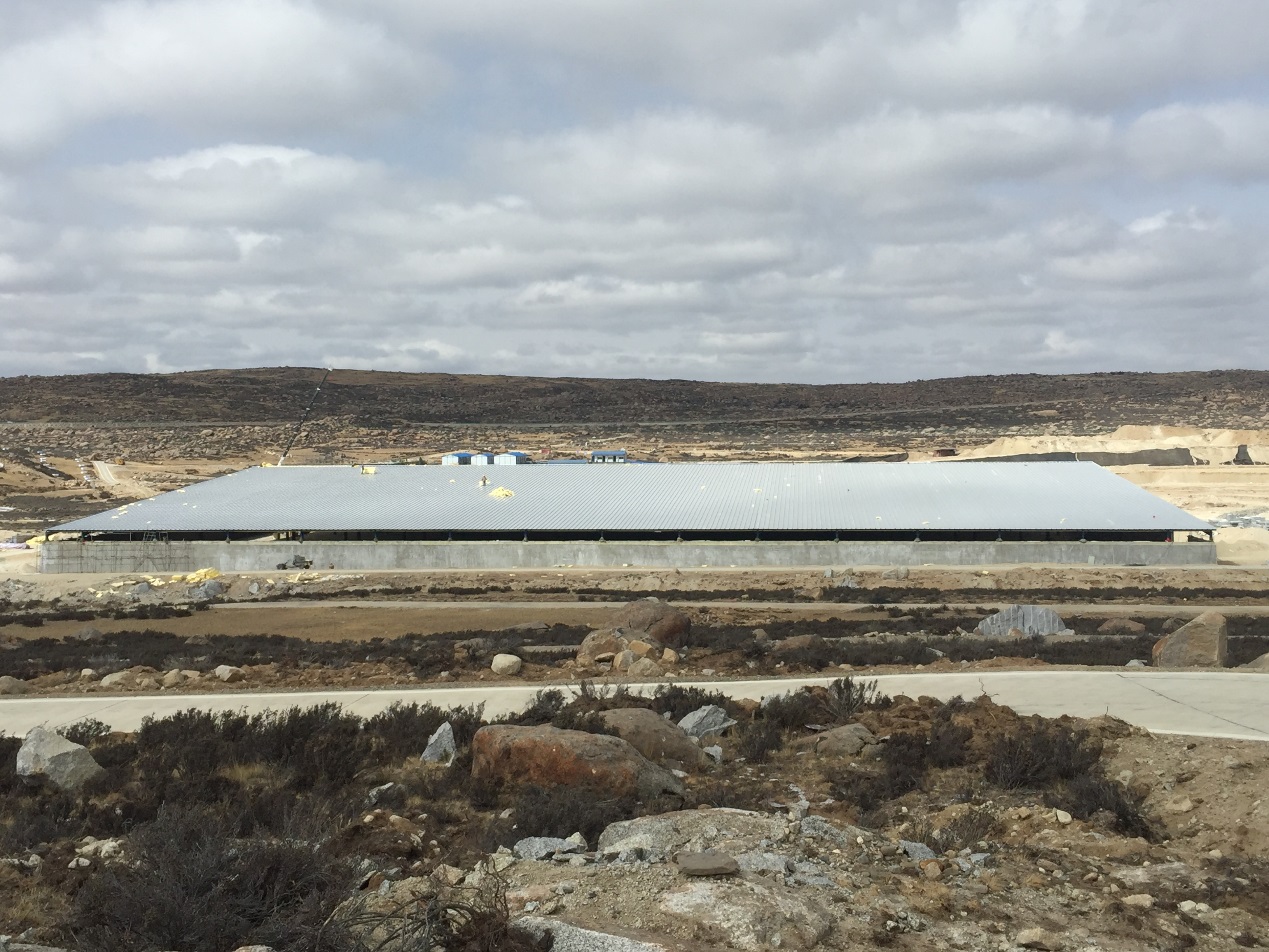
The main structure of the No.1 Pool of the Water Cherenkov Detector Array (WCDA) of the Large High Altitude Air Shower Observatory (LHAASO) was completed on February 1, 2018.
In the next phase, scientists and engineers will start to install cosmic ray detectors inside the pool. It is estimated that construction will be completed and operation of this detector pool started by the end of this year.
The WCDA is composed of three adjacent large pools, at a depth of 4.4 m. Each pool can be divided into several 5 m x 5 m unit detectors, each provided with 1-2 photomultiplier tubes (PMTs) for measuring the Cherenkov light generated in the water by secondary particles in extended air showers. The Cherenkov light is then converted to electrical signals for measurement.
After its completion, the WCDA’s effective detection area will exceed that of the detector array of the High Altitude Water Cherenkov (HAWC) in Mexico. At about 4,410 meters above sea level, this will enable the WCDA, which has an area of 22.5 thousand m2, to become the largest and the most sensitive detector array of its kind in the world.
Situated on Haizi Mountain, Daocheng County, Sichuan Province, the LHAASO observation base covers an area of 1.36 km2 and is at an altitude of 4,410 m. The observation base is composed of the entire detector array and an assembly hall, substation, water treatment machine room, calibration room and other facilities.
The main scientific objectives of LHAASO are to search for the origin of high energy cosmic rays, to study the evolution of the universe and high energy celestial bodies, and to push forward the frontiers of new physics.

Main Structure at LHAASO Water Cherenkov Detector Array Completed (Image by IHEP)

86-10-68597521 (day)
86-10-68597289 (night)

86-10-68511095 (day)
86-10-68512458 (night)

cas_en@cas.cn

52 Sanlihe Rd., Xicheng District,
Beijing, China (100864)

